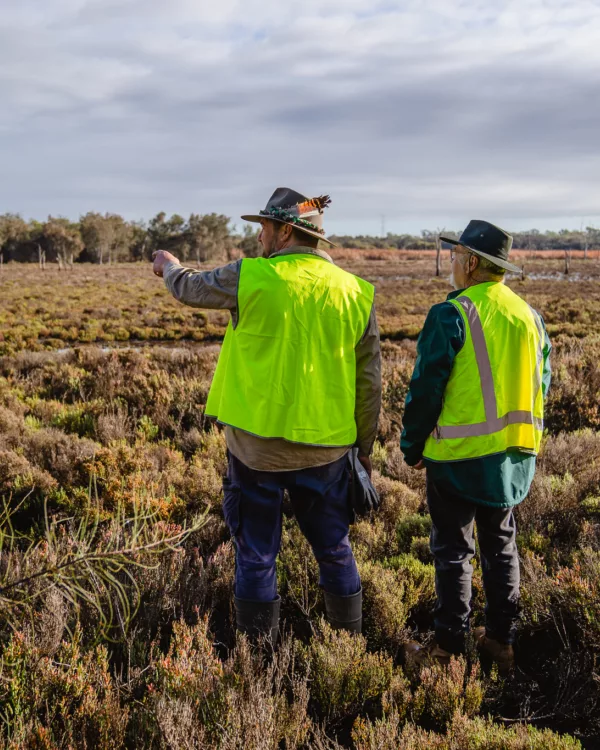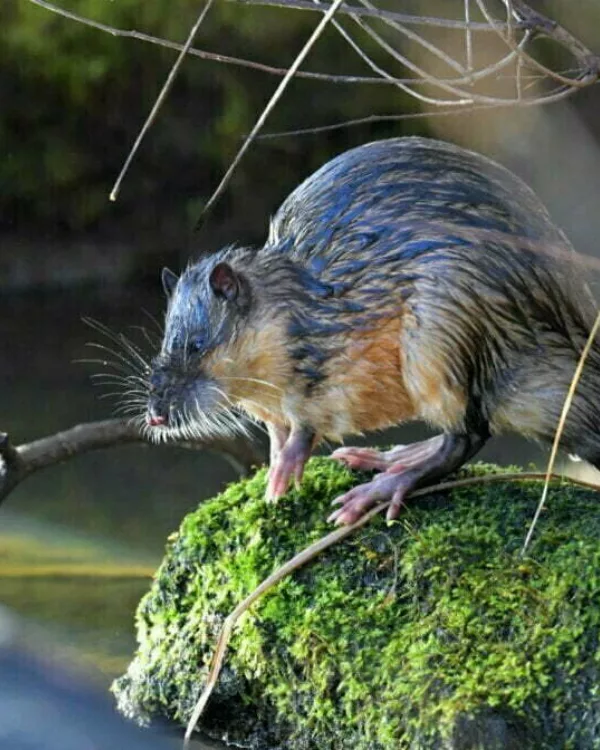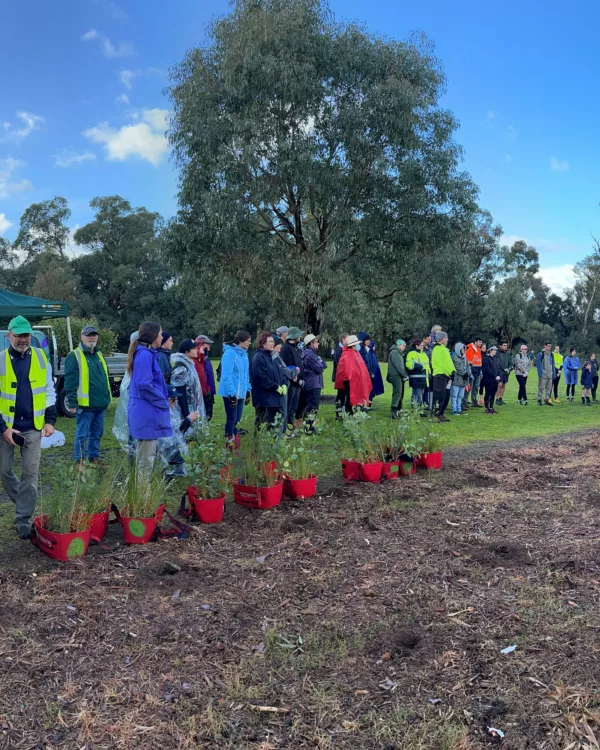A third of global wetlands have disappeared since the 1970s, they are the ‘canaries’ of our planet’s health. #
Absorbing carbon dioxide and other pollutants from the atmosphere at a rate much higher than forests, protecting and restoring wetlands is the best and quickest way to limit the impact of climate change. Wetland ecosystems provide important habitat for thousands of species of native animals, birds, reptiles, amphibians, and marsupials.
The majestic Eucalyptus rudis which only grows alongside wetland areas, is now sadly classified as a near-threatened vegetation community due to land clearing for agriculture and urban development. Our conservation efforts are focused on helping to protect and restore the remaining areas containing these important ecosystems in urban environments.

Mandoon Moitch Restoration Project, Guildford Meadow, Caversham
Located on the banks of the Derbal Yerrigan (Swan River) this project contains a significant remnant wetland, once surrounded by riparian vegetation and a Eucalyptus rudis (Moitch / Flooded Gum) Woodland.
The area was largely cleared for grazing in the 1930s with only the wetland and a few large trees remaining. Now a part of Whiteman Park, it’s an area of environmental importance that provides viable habitat for threatened and at-risk native animal species, and is home to significant, registered cultural sites of the local Noongar people.
Key species
Moitch (Flooded gum) Eucalyptus rudis, fast growing tree species that creates large nesting hollows suitable for many bird species and tree-dwelling marsupials.
Boorarup (River Banksia) Banksia littoralis, viable source of food and nectar for many bird species.
Mohan Melaleuca viminea, habitat and source of nectar for many small species of birds.
Koorlee (Swamp She-oak) Casuarina obesa, source of food and habitat for a variety of local animals including the endangered Carnaby’s Black Cockatoo and threatened Forest Red-tailed Black Cockatoo.

Bilya Restoration Project, Helena River, Hazelmere
Home to Western Long Neck Turtles, Rakali, Brush Tailed Possums, and a large variety of bird species, this project is rebuilding local plant communities along the lower floodplain to provide viable habitat to the many remnant fauna species in the area. We are engaging with the local community to raise awareness about the ecological value, and benefits of restoring this important biodiverse area.
Key species
(Tall sedge) Carex appressa, densely tufted sedge, prime habitat species.
(Finger Rush) Juncus subsecundus, habitat species, riverbank stabilisation, improves water quality.
(Pale Rush) Juncus pallidus, habitat species, riverbank stabilisation, improves water quality.

Kweela Woodland Restoration Project, Reg Bond Reserve, Viveash
Located in an area of historically cleared grass parkland on the Swan River’s floodplain, the restoration aims to connect existing pockets of native vegetation to create a corridor of riparian woodland. An important habitat for an extensive variety of native birds including endangered black cockatoos.
This project is creating Memorial Groves in association with our long term partners, Bowra and O'Dea. These native trees will become a living legacy to loved ones who have passed, while also contributing to the restoration of lost habitats.
Key species
Kweela (Swamp She-oak) Casuarina obesa, source of food and habitat for a variety of local animals including the endangered Carnaby’s Black Cockatoo and in-decline Forest Red-tailed Black Cockatoo.
Moitch (Flooded gum) Eucalyptus rudis, fast growing tree species that creates large nesting hollows suitable for many bird species and tree-dwelling marsupials.
Boorarup (River Banksia) Banksia littoralis, viable source of food and nectar for many bird species.
Mohan Melaleuca viminea, habitat and source of nectar for many small species of birds.
